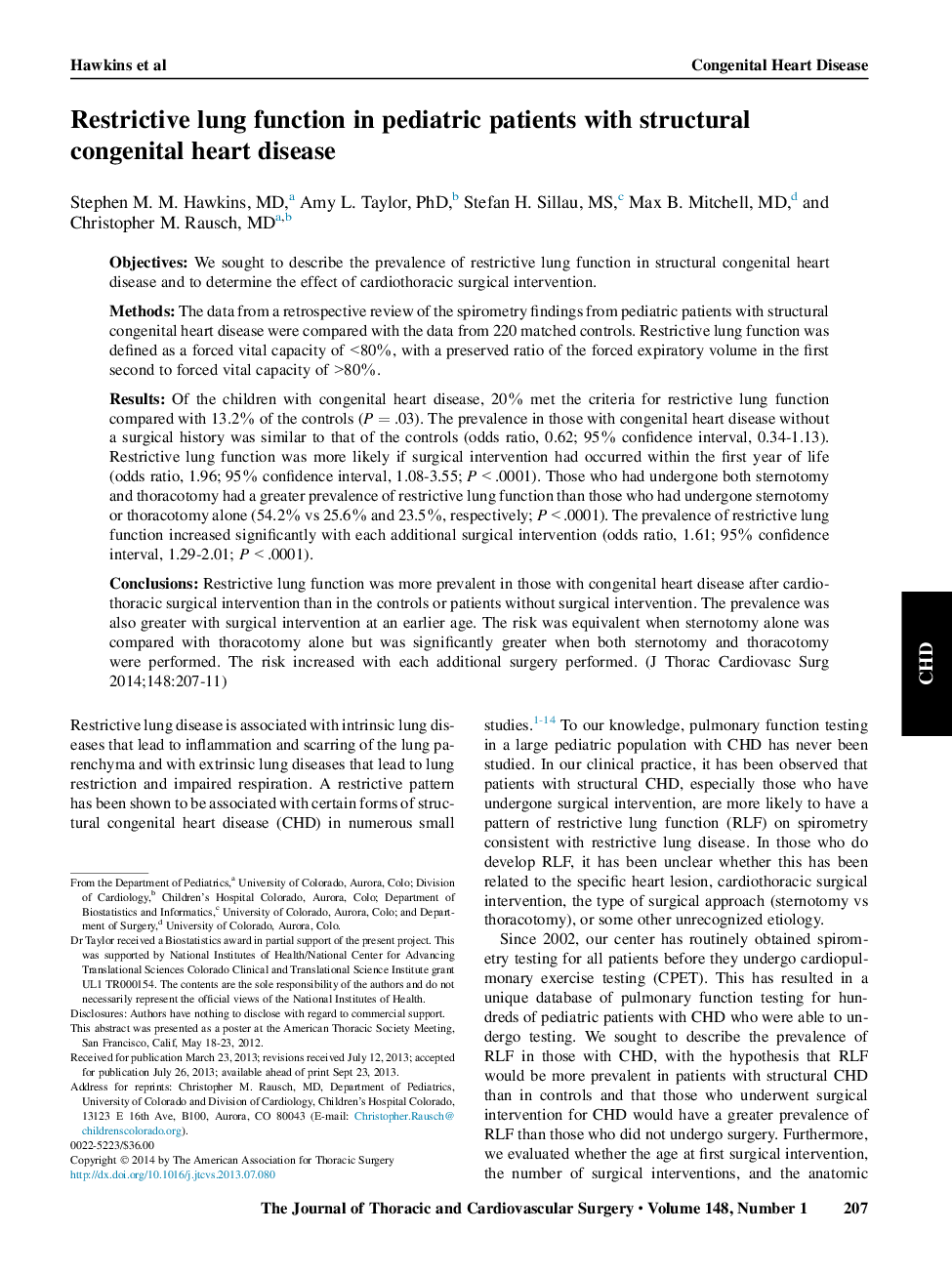| Article ID | Journal | Published Year | Pages | File Type |
|---|---|---|---|---|
| 2980767 | The Journal of Thoracic and Cardiovascular Surgery | 2014 | 5 Pages |
ObjectivesWe sought to describe the prevalence of restrictive lung function in structural congenital heart disease and to determine the effect of cardiothoracic surgical intervention.MethodsThe data from a retrospective review of the spirometry findings from pediatric patients with structural congenital heart disease were compared with the data from 220 matched controls. Restrictive lung function was defined as a forced vital capacity of <80%, with a preserved ratio of the forced expiratory volume in the first second to forced vital capacity of >80%.ResultsOf the children with congenital heart disease, 20% met the criteria for restrictive lung function compared with 13.2% of the controls (P = .03). The prevalence in those with congenital heart disease without a surgical history was similar to that of the controls (odds ratio, 0.62; 95% confidence interval, 0.34-1.13). Restrictive lung function was more likely if surgical intervention had occurred within the first year of life (odds ratio, 1.96; 95% confidence interval, 1.08-3.55; P < .0001). Those who had undergone both sternotomy and thoracotomy had a greater prevalence of restrictive lung function than those who had undergone sternotomy or thoracotomy alone (54.2% vs 25.6% and 23.5%, respectively; P < .0001). The prevalence of restrictive lung function increased significantly with each additional surgical intervention (odds ratio, 1.61; 95% confidence interval, 1.29-2.01; P < .0001).ConclusionsRestrictive lung function was more prevalent in those with congenital heart disease after cardiothoracic surgical intervention than in the controls or patients without surgical intervention. The prevalence was also greater with surgical intervention at an earlier age. The risk was equivalent when sternotomy alone was compared with thoracotomy alone but was significantly greater when both sternotomy and thoracotomy were performed. The risk increased with each additional surgery performed.
